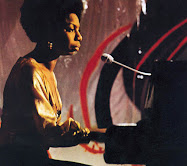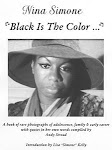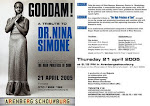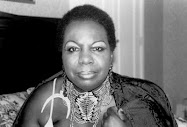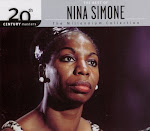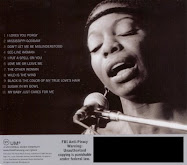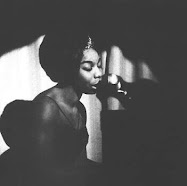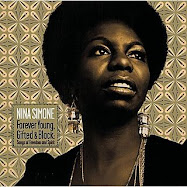Wednesday, December 24, 2014
Saturday, November 22, 2014
The Heath Brothers Jazz
The Heath Brothers Jazz for The People Playlist
The Heath Brothers is a jazz group, formed in 1975 in Philadelphia, Pennsylvania, by the brothers Jimmy (tenor saxophone), Percy (bass), and Albert "Tootie" Heath (drums); and pianist Stanley Cowell. Tony Purrone (guitar) and Jimmy's son Mtume (percussion) joined the group later. Tootie left in 1978, and was replaced by Akira Tana for a short period before returning in 1982. They also added other sidemen for some of their recording dates.
The group still exists with just two of the brothers, Jimmy and Tootie, and additional sidemen as needed.
The DVD, Brotherly Jazz: The Heath Brothers, recorded in 2004, shortly before Percy Heath's death, was one of the last times the three brothers played together, and chronicled the Heath Brothers' personal lives as well as socio-political issues many jazz musicians dealt with in the later 20th century, including jail, drugs, discrimination and segregation.
The 2009 CD Endurance was the first without Percy, and features seven original numbers by Jimmy, including "From a Lonely Bass", composed in memory of his late brother.
The Master Class: Heath Brothers Performance
The 4th Master class in the fall series featured two of the incredible Heath Brothers, Percy and Jimmy. The third brother Albert was not attending that day. Coming from a musical family and known as one of the first families of jazz, the Philadelphia brothers are known for their impeccable compositions,
arrangements and love of bebop. Each brother became musically successful in their own right and played with many of the bebop pioneers such as the Dizzy Gillespie Big Band. The rhythm section became known as the famous Modern Jazz Quartet after Percy succeeded Ray Brown, launching a 43 year career. Jimmy also played with Gillespie, exchanging his alto sax for a tenor and is a talented composer-arranger. Throughout the master class, you can sense the love of music the brothers have to this day.
Master Class: Percy Heath Backstage Interview
Jimmy Heath: Why Ben Webster Learned the Lyrics - JazzTimes Before and After
Brotherly Jazz: The Heath Brothers
An Oral History with Albert "Tootie" Heath
Sunday, October 19, 2014
Sunday, October 12, 2014
Jazz at the Philharmonic 1967 BBC JATP Clark Terry, Teddy Wilson,ZootSims,
Clark Terry
James Moody
Zoot Sims
Dizzy Gillespie
Coleman Hawkins
Benny Carter
Teddy Wilson
Bob Cranshaw
Louie Bellson
T-bone Walker
Jazz at the Philharmonic 1967 BBC
1967 BBC
full concert
Saturday, September 20, 2014
Regina Carter Jazz Violin
Violinist Regina Carter is a highly original soloist whose sophisticated technique and rich, lush tone took the jazz world by pleasant surprise when she arrived in New York from her native Detroit. And jazz fans weren't the only people who heard that mercurial quality in her playing: artists as diverse as Faith Evans, Elliot Sharp, and Mary J. Blige have employed her talents on their recordings, as has filmmaker Ken Burns on his soundtrack for The Civil War. Add this to an extremely long list of jazzers who include Tom Harrell, Wynton Marsalis, and Oliver Lake.
Regina Carter Jazz Violin Playlist
Regina Carter (born August 6, 1966) is the cousin of famous jazz saxophonist James Carter.She was born in Detroit and was one of three children in her family. She began piano lessons at the age of two after playing a melody by ear for her brother's piano teacher. After she deliberately played the wrong ending note at a concert, the piano teacher suggested she take up the violin. She suggested that the Suzuki Method was more conducive to her creativity. Carter's mother enrolled her at the Detroit Community Music School when she was four years old and she began studying the violin. She still studied the piano, as well as tap and ballet.
As a teenager, she played in the youth division of the Detroit Symphony Orchestra. While at school, she was able to take master classes from Itzhak Perlman and Yehudi Menuhin.
Carter attended Cass Technical High School with a close friend, jazz singer Carla Cook, who introduced her to Ella Fitzgerald. In high school, Carter performed with the Detroit Civic Orchestra and played in a pop-funk group named Brainstorm. In addition to taking violin lessons, she also took viola, oboe, and choir lessons.
Carter was studying classical violin at the New England Conservatory of Music in Boston when she decided to switch to jazz, but the school did not have that as a program. She transferred to Oakland University in Rochester, Michigan. Here she studied jazz with Marcus Belgrave. Through Belgrave Carter was able to meet a lot of people active in the Detroit jazz scene, including Lyman Woodard. She graduated in 1985. After graduating, she taught strings in Detroit public schools. Needing a change of scene, she moved to Europe and spent two years in Germany. While making connections, she worked as a nanny for a German family and taught violin on a U.S. military base.
Regina Carter returned to Michigan to join the all-female jazz quartet Straight Ahead. After two recordings for the Atlantic label, Carter left the band in 1994 in search of a solo career. She had already been doing session work in the city and sought to make the move permanent. Carter found herself working with Max Roach, the String Trio of New York, and the Uptown String Quartet before recording her self-titled debut recording on Atlantic in 1995. Its mixture of R&B, pop, and jazz confused jazz fans and delighted pop critics. It sold well enough for her to record Something for Grace, which leaned in a jazz direction though it featured an R&B sheen in its production. Carter left Atlantic for Verve in 1998 and recorded two more outings under her own name, the last of which, Motor City Moments, is her finest session. In 2001, Carter recorded a duet session with Kenny Barron that has been universally acclaimed for its lyrical qualities and stunning range of dynamics and harmonic invention.
She has since released the classically influenced Paganini: After a Dream in 2003 and the American songbook album I'll Be Seeing You: A Sentimental Journey in 2006 as a tribute to her late mother.
She won a MacArthur Foundation Fellowship in September of that year. After much time spent touring and a sojourn in Africa, Carter emerged with Reverse Thread in 2010 on the E1 imprint. The album is comprised mainly of African folk tunes from countries as diverse as Mali, Uganda, and Senegal among others. Her sidemen on this recording include accordionists Will Holshouser and Gary Versace, guitarist Adam Rogers, acoustic bassist Chris Lightcap, electric bassist Mamadou Ba, kora master Yocouba Sissoko, and drummer Alvester Garnett. Using many of the same musicians, Carter furthered her exploration of earlier musics on Southern Comfort, which explored in detail as well as in concept the roots of American music. It was released in March of 2014.
Regina Carter Interview
Atlanta Jazz Festival Regina Carter Special class HD
Interview with Regina Carter at the Jackie Robinson Foundation Afternoon of Jazz 1996
Regina Carter Clip - Discussing her musical inspirations & practice
Friday, September 19, 2014
Wednesday, September 17, 2014
Tuesday, September 16, 2014
Gene Ammons will make you FEEL
Eugene "Jug" Ammons also known as "The Boss", was an American jazz tenor saxophonist, and the son of boogie-woogie pianist Albert Ammons
Gene Ammons will make you FEEL
Gene Ammons, who had a huge and immediately recognizable and captivating tone on tenor, had the natural ability to take a tune and make it his own. He was a flexible and technically proficient player who could play in many musical idioms as well as being an incredible balladeer. He proved to be very much his own man, developing a distinctive, warm sound that nevertheless fitted well into the hard-edged playing of his colleagues. Some of his ballad renditions became hits and, despite two unfortunate interruptions in his career, Ammons remained a popular attraction for 25 years.
Born April 14, 1925 – July 23, 1974 in Chicago, Illinois, Ammons studied music with instructor Walter Dyett at DuSable High School. Ammons began to gain recognition while still at high school when in 1943, at the age of 18, he went on the road with trumpeter King Kolax's band. In 1944 he joined the band of Billy Eckstine (who bestowed on him the nickname "Jug" when straw hats ordered for the band did not fit), playing alongside Charlie Parker and later Dexter Gordon. Notable performances from this period include "Blowin' the Blues Away," featuring a saxophone duel between Ammons and Gordon. After 1947, when Eckstine became a solo performer, Ammons then led a group, including Miles Davis and Sonny Stitt, that performed at Chicago's Jumptown Club. In 1949 Ammons replaced Stan Getz as a member of Woody Herman's Second Herd, and then in 1950 formed a duet with Sonny Stitt.
Ammons had an ability to infuse originals and standards with preachy yet elegant clouds of sound, contributing to what became known as “soul jazz”. A pioneering tenor saxophonist in bebop jazz, cool school jazz, and, later, soul jazz, Gene “Jug” Ammons played alongside several of the bebop and postbop eras’ most noted players, including Charlie Parker, Dexter Gordon, John Coltrane, Art Blakey, Fats Navarro and Sonny Stitt to name a few. Ammons worked as a single throughout his career, recording frequently in settings ranging from quartets and organ combos to all-star jam sessions.
Drug problems kept him in prison during much of 1958-1960 and, due to a particularly stiff sentence, 1962-1969.
When Ammons returned to the scene in 1969, he opened up his style a bit, including some of the emotional cries of the avant-garde while utilizing funky rhythm sections, but he was still able to battle Sonny Stitt on his own terms. Ironically, the last song that he ever recorded (just a short time before he was diagnosed with terminal cancer in 1974) was “Goodbye.”
Gene Ammons - Canadian Sunset (Original LP Remastered) (Full Album)
Gene Ammons - Nice And Cool (Full Album)
Monday, September 15, 2014
Sunday, August 3, 2014
Summer Horns Live at Java Jazz Festival 2014
Summer Horns feat. Dave Koz, Gerald Albright, Mindi Abair & Richard Elliot live at the Jakarta International Java Jazz Festival 2014, Saturday March 1st - A3 Hall JIExpo Kemayoran, Jakarta, Indonesia.
Monday, May 26, 2014
Sunday, May 25, 2014
What is Cool Jazz, Anyway?
Definition: a term sometimes given to the music inspired by bebop but played by white musicians after World War II such as Gerry Mulligan, Lee Konitz, Lennie Tristano, and Warne Marsh. However, Miles Davis, with his album Birth of the Cool, helped spread the popularity of the style, which tended to be more subdued and cerebral than hard bop, a parallel post-bebop movement.
Billy Taylor Productions Presents Jimmy Owens, flugelhorn; Billy Taylor, piano; Chip Jackson, bass and Steve Johns on drums.
Wednesday, May 7, 2014
Streetwize - Smooth Playlist
Streetwize - Smooth Playlist
Bio by Wade Kergan
A smooth jazz studio supergroup led by saxophonist Kim Waters, Streetwize feature a roster including singer Maysa Leak and guitarist Ken Navarro. The idea of collaboration is nothing new to jazz -- smooth or otherwise -- the twist here is that Streetwize perform contemporary rap and R&B radio hits. Their first album, Streetwize: Smooth Urban Jazz, was released by Shanachie in 2002 and featured versions of Mystikal's "Shake It Fast," Aaliyah's "Rock the Boat," and D'Angelo's "Brown Sugar." A second album, Work It, appeared the next year with Kim Waters and company polishing the edges off tracks made popular by Missy Elliott, Erykah Badu, and Jennifer Lopez. In 2004, Streetwize delivered the sultry Slow Jamz featuring the Isley Brothers tributes "Don't Say Goodnight" and "Between the Sheets." Two years later, the band returned with Does Dre which included songs associate with rapper Dr. Dre such as Eminem's "My Name Is," Snoop Dogg's "Gin and Juice," and "Nuthin' But a G Thang." The band continued in the slow jam cover song vein with 2007's Sexy Love, 2008's Streetwize Does Mary J Blige, and 2009's Put U to Bed. In 2012, Streetwize released its eighth studio album, Feelin' Sexy, featuring covers of songs by Robin Thicke, R. Kelly, Frank Ocean, and others. Body Party followed in 2013 with versions of Ciara's song of the same title, Drake's "Hold On, We're Going Home," and Tamar Braxton's "The One."
Tuesday, April 15, 2014
John Coltrane
John Coltrane represents the ultimate uncomprimising musician. An art not created for entertainment or commercial ambitions but rather a spiritual pursuit, a connection with the infinite. The last period before his death was marked by that search through some of the most explorative free jazz there is.
His Story
click full screen
Merely mention the name John Coltrane and you’re likely to evoke a deeply emotional, often spiritual response from even the most casual jazz fan. John Coltrane was the most revolutionary and widely imitated saxophonist in jazz.
 Born September 23, 1926 in Hamlet, North Carolina, John Coltrane was always surrounded by music.Coltrane grew up in High Point, North Carolina, his father played several instruments sparking Coltrane’s study of E-flat horn and clarinet. While in high school, (at about the age of 15) Coltrane’s musical influences shifted to the likes of Lester Young and Johnny Hodges prompting him to switch to alto saxophone. After moving to Philadelphia, he continued his musical training at Granoff Studios and the Ornstein School of Music. He was called to military service during WWII, where he performed in the U.S. Navy Band (1945-46) .
Born September 23, 1926 in Hamlet, North Carolina, John Coltrane was always surrounded by music.Coltrane grew up in High Point, North Carolina, his father played several instruments sparking Coltrane’s study of E-flat horn and clarinet. While in high school, (at about the age of 15) Coltrane’s musical influences shifted to the likes of Lester Young and Johnny Hodges prompting him to switch to alto saxophone. After moving to Philadelphia, he continued his musical training at Granoff Studios and the Ornstein School of Music. He was called to military service during WWII, where he performed in the U.S. Navy Band (1945-46) . After the war,he played alto saxophone in the bands led by Joe Webb and King Kolax, then changed to the tenor to work with Eddie "Cleanhead" Vinson (1947-48). He performed on either instrument as circumstances demanded while in groups led by Jimmy Heath, Howard McGhee, Dizzy Gillespie (with whom he made his first recording in 1949), Earl Bostic, and lesser-known rhythm-and-blues musicians, but by the time of his membership in Johnny Hodges's septet (1953-54) he was firmly committed to the tenor instrument. Coltrane began playing tenor saxophone with the Eddie "CleanHead" Vinson Band, and was later quoted as saying, "A wider area of listening opened up for me. There were many things that people like Hawk, and Ben and Tab Smith were doing in the ‘40’s that I didn’t understand, but that I felt emotionally." Prior to joining the Dizzy Gillespie band, Coltrane performed with Jimmy Heath where his passion for experimentation began to take shape. However, it was his work with the Miles Davis Quintet with Red Garland, Paul Chambers, and Philly Joe Jones (1955-57) that would lead to his own musical evolution. " Miles music gave me plenty of freedom," he once said. During that period, he became known for using the three-on-one chord approach, and what has been called the ‘sheets of sound,’ a method of playing multiple notes at one time.
After the war,he played alto saxophone in the bands led by Joe Webb and King Kolax, then changed to the tenor to work with Eddie "Cleanhead" Vinson (1947-48). He performed on either instrument as circumstances demanded while in groups led by Jimmy Heath, Howard McGhee, Dizzy Gillespie (with whom he made his first recording in 1949), Earl Bostic, and lesser-known rhythm-and-blues musicians, but by the time of his membership in Johnny Hodges's septet (1953-54) he was firmly committed to the tenor instrument. Coltrane began playing tenor saxophone with the Eddie "CleanHead" Vinson Band, and was later quoted as saying, "A wider area of listening opened up for me. There were many things that people like Hawk, and Ben and Tab Smith were doing in the ‘40’s that I didn’t understand, but that I felt emotionally." Prior to joining the Dizzy Gillespie band, Coltrane performed with Jimmy Heath where his passion for experimentation began to take shape. However, it was his work with the Miles Davis Quintet with Red Garland, Paul Chambers, and Philly Joe Jones (1955-57) that would lead to his own musical evolution. " Miles music gave me plenty of freedom," he once said. During that period, he became known for using the three-on-one chord approach, and what has been called the ‘sheets of sound,’ a method of playing multiple notes at one time.John Coltrane - Playlist
 Coltrane next played in Thelonious Monk's quartet (July-December 1957), but owing to contractual conflicts took part in only one early recording session of this legendary group. He rejoined Davis and worked in various quintets and sextets with Cannonball Adderley, Bill Evans, Chambers, Jones, and others (1958-60). While with Davis he discovered the soprano saxophone, purchasing his own instrument in February 1960.
Coltrane next played in Thelonious Monk's quartet (July-December 1957), but owing to contractual conflicts took part in only one early recording session of this legendary group. He rejoined Davis and worked in various quintets and sextets with Cannonball Adderley, Bill Evans, Chambers, Jones, and others (1958-60). While with Davis he discovered the soprano saxophone, purchasing his own instrument in February 1960.Throughout the 1950s addiction to drugs and then alcoholism disrupted his career. Shortly after leaving Davis, however, he overcame these problems.

 Having led numerous studio sessions, established a reputation as a composer, and emerged as the leading tenor saxophonist in jazz, Coltrane was now prepared to form his own group; it made its debut at New York's Jazz Gallery in early May 1960. After briefly trying Steve Kuhn, Pete La Roca, and Billy Higgins, Coltrane hired two musicians who became longstanding members of his quartet, McCoy Tyner (1960-65) and Elvin Jones (1960-66); the third, Jimmy Garrison, joined in 1961. With these sidemen the quartet soon acquired an international following. At times Art Davis added a second double bass to the group; Eric Dolphy also served as an intermittent fifth member on bass clarinet, alto saxophone, and flute from 1961 to 1963,eventually adding players like Pharoah Sanders. The John Coltrane Quartet created some of the most innovative and expressive music in Jazz history including the hit albums: "My Favorite Things," "Africa Brass," " Impressions," " Giant Steps," and his monumental work "A Love Supreme" which attests to the power, glory, love, and greatness of God. Coltrane felt we must all make a conscious effort to effect positive change in the world, and that his music was an instrument to create positive thought patterns in the minds of people.
Having led numerous studio sessions, established a reputation as a composer, and emerged as the leading tenor saxophonist in jazz, Coltrane was now prepared to form his own group; it made its debut at New York's Jazz Gallery in early May 1960. After briefly trying Steve Kuhn, Pete La Roca, and Billy Higgins, Coltrane hired two musicians who became longstanding members of his quartet, McCoy Tyner (1960-65) and Elvin Jones (1960-66); the third, Jimmy Garrison, joined in 1961. With these sidemen the quartet soon acquired an international following. At times Art Davis added a second double bass to the group; Eric Dolphy also served as an intermittent fifth member on bass clarinet, alto saxophone, and flute from 1961 to 1963,eventually adding players like Pharoah Sanders. The John Coltrane Quartet created some of the most innovative and expressive music in Jazz history including the hit albums: "My Favorite Things," "Africa Brass," " Impressions," " Giant Steps," and his monumental work "A Love Supreme" which attests to the power, glory, love, and greatness of God. Coltrane felt we must all make a conscious effort to effect positive change in the world, and that his music was an instrument to create positive thought patterns in the minds of people.Coltrane turned to increasingly radical musical styles in the mid-1960s. These controversial experiments attracted large audiences, and by 1965 he was surprisingly affluent. From autumn 1965 his search for new sounds resulted in frequent changes of personnel in his group. New members included Pharoah Sanders, Alice Coltrane (his wife), Rashied Ali (a second drummer until Jones' departure), several drummers as seconds to Ali, and a number of African-influenced percussionists. In his final years and after his death, Coltrane acquired an almost saintly reputation among listeners and fellow musicians for his energetic and selfless support of young avant-garde performers, his passionate religious convictions, his peaceful demeanor, and his obsessive striving for a musical ideal.
 In 1967, liver disease took Coltrane’s life leaving many to wonder what might have been. Yet decades after his departure his music can be heard in motion pictures, on television and radio. Recent film projects that have made references to Coltrane’s artistry in dialogue or musical compositions include, "Mr. Holland’s Opus", "The General’s Daughter", "Malcolm X", "Mo Better Blues", "Jerry McGuire", "White Night", "The Last Graduation", "Come Unto Thee", "Eyes On The Prize II" and "Four Little Girls". Also, popular television series such as "NYPD Blue", "The Cosby Show", "Day’s Of Our Lives", "Crime Stories" and "ER", have also relied on the beautiful melodies of this distinguished saxophonist.
In 1967, liver disease took Coltrane’s life leaving many to wonder what might have been. Yet decades after his departure his music can be heard in motion pictures, on television and radio. Recent film projects that have made references to Coltrane’s artistry in dialogue or musical compositions include, "Mr. Holland’s Opus", "The General’s Daughter", "Malcolm X", "Mo Better Blues", "Jerry McGuire", "White Night", "The Last Graduation", "Come Unto Thee", "Eyes On The Prize II" and "Four Little Girls". Also, popular television series such as "NYPD Blue", "The Cosby Show", "Day’s Of Our Lives", "Crime Stories" and "ER", have also relied on the beautiful melodies of this distinguished saxophonist. In 1972, "A Love Supreme" was certified gold by the RIAA for exceeding 500,000 units in Japan. This jazz classic and the classic album "My Favorite Things" were certified gold in the United States in 2001.In 1982, the RIAA posthumously awarded John Coltrane a Grammy Award of " Best Jazz Solo Performance" for the work on his album, "Bye Bye Blackbird". In 1997 he received the organizations highest honor, the Lifetime Achievement Award.
In 1972, "A Love Supreme" was certified gold by the RIAA for exceeding 500,000 units in Japan. This jazz classic and the classic album "My Favorite Things" were certified gold in the United States in 2001.In 1982, the RIAA posthumously awarded John Coltrane a Grammy Award of " Best Jazz Solo Performance" for the work on his album, "Bye Bye Blackbird". In 1997 he received the organizations highest honor, the Lifetime Achievement Award.On June 18, 1993 Mrs. Alice Coltrane received an invitation to The White House from former President and Mrs. Clinton, in appreciation of John Coltrane’s historical appearance at the Newport Jazz Festival.

In 1995, John Coltrane was honored by the United States Postal Service with a commemorative postage stamp. Issued as part of the musicians and composers series, this collectors item remains in circulation.
John Coltrane (1926-1967) - Documentaire - Documentary
John Coltrane - Stellar Regions (1967) [Full Album]
Saint John Coltrane
1964 - John Coltrane - A Love Supreme
John Coltrane - Giant steps full jazz album
Wednesday, March 26, 2014
Wednesday, February 26, 2014
Blue Note 60 Ans de Jazz 1939 1999
Blue Note 60 Ans de Jazz 1939 1999 [Album CD1]
01. Cannonball Aderley (Feature Miles Davis) - Autumn Leaves
02. Herbie Hancock - Watermelon Man
03. Kenny Burrell - Midnight Blue
04. Duke Ellington - Caravan
05. Art Blakey - Moanin'
06. Sonny Rollins - Reflections
07. Thelonious Monk - Off Minor
08. Ornette Coleman - Love Call
09. Grant Green - The Matador
10. Chick Corea - Now He Sings - Now He Sobs
Blue Note 60 Ans de Jazz 1939 1999 [Album CD2]
01. John Coltrane - Blue Train
02. Miles Davis - Enigma
03. Horace Silver - Song For My Father
04. Eric Dolphy - Out To Lunch
05. Clifford Brown - Wail Bait
06. Bud Powell - Un Poco Loco
07. Dexter Gordon - I Guess I'll Hang My Tears Out To Dry
08. Lee Morgan - The SideWinder
09. Joe Henderson - In & Out
10. Wayne Shorter - Juju
Classic Jazz: Jazz Legends Disc 1 [Full Length Album]
Track list:
00:05 1. Take the "A" Train -- Duke Ellington Orchestra
04:43 2. It Don't Mean a Thing (If It Ain't Got That Swing) -- Ella Fitzgerald
09:01 3. Mack the Knife -- Louis Armstrong and His All-Stars
12:29 4. Lullaby of Birdland -- Mel Tormé
17:25 5. Misty -- Erroll Garner Trio
20:17 6. God Bless the Child -- Billie Holiday
24:20 7. The "In" Crowd -- Ramsey Lewis Trio
30:16 8. Take Five -- Dave Brubeck Quartet
35:45 9. The Girl from Ipanema -- Stan Getz and Astrud Gilberto
41:15 10. My Funny Valentine -- Chet Baker
43:38 11. Exodus -- Eddie Harris
45:45 12. (Get Your Kicks On) Route 66 -- Nat King Cole Trio
48:50 13. Flying Home -- Illinois Jacquet
52:06 14. Smoke Gets in Your Eyes -- Sarah Vaughan
56:10 15. April in Paris -- Count Basie and His Orchestra
Subscribe to:
Comments (Atom)




















































